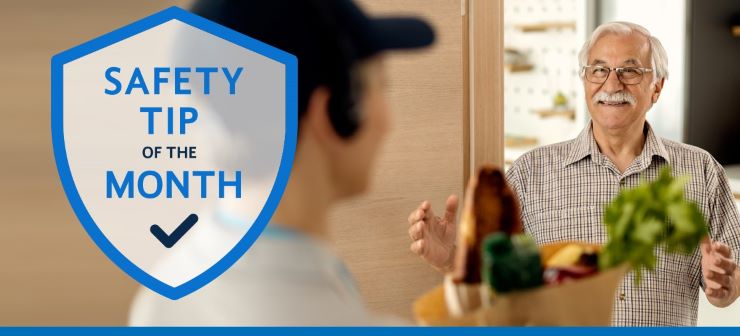The rise of delivery is changing the way grocers operate. Although this trend is creating benefits for both grocery operators and their customers, it’s also bringing a new host of risks. If grocers want to seize this opportunity successfully, they need to be aware of potential issues and how to manage them.
The Pandemic Changed the Way People Buy Groceries
Grocery deliveries took off during the pandemic, when people relied on deliveries to get food and other essentials without risking exposure to COVID-19. According to McKinsey & Company, grocers saw 20% to 30% of their business go online during the peak of the COVID-19 pandemic.
Demand for online groceries declined somewhat as the pandemic dragged on, and by the end of 2020, it had settled at 9% to 12%. Although this is less than half of the demand at its peak, it’s still a threefold increase compared to pre-pandemic levels. A survey found that close to half of consumers say they purchase groceries online at least once a week.
It looks like grocery deliveries are here to stay.
The Pros and Cons of Grocery Delivery
For consumers, grocery delivery provides a convenient way to buy necessities. This option may be especially attractive to people who don’t own a car, parents with young children and other individuals who may have a hard time getting to the store for whatever reason.
For grocery store operators, grocery delivery services can be a lucrative source of revenue. According to Brick Meets Click, U.S. grocery delivery sales reached $2.5 billion in May 2022.
However, there are also disadvantages to delivery. These downsides include the potential for food safety issues, car crashes, crime and issues with third-party service providers.
Food Safety
Food safety is a major concern. The CDC says that the germs that cause food poisoning multiply quickly when food is left at 40° F to 140° F. This may happen when food is in the cart before checkout, when it is in the car, and when it is left on the customer’s doorstep.
When food is outside of your care, custody and control, food safety is more difficult to manage. Drivers must be carefully trained and protocols must be established. For example, are your drivers allowed to have passengers, children or pets in the car while delivering on your behalf? While the answer may seem obvious to you, your drivers may assume these situations are okay. Be clear about your expectations.
Car Crashes
As delivery increased, so did fatal car crashes. The NHTSA says that fatal crashes increased by 6.8% in 2020. The NHTSA also says that traffic fatalities increased by another 10.5% in 2021.
This doesn’t necessarily mean that delivery drivers are responsible for the rise in traffic fatalities. However, it does show that traffic safety is a concern. Delivery drivers may be especially at risk for a serious crash because they are on the road a lot and because they may feel rushed. Businesses need to make sure their drivers are obeying the speed limit, avoid cell phones and other distractions, and generally practicing safe driving habits. Checking driving history reports is another way to avoid risky driving.
Crime
Crime is another concern, and it can be committed by or against the delivery drivers. For example, drivers may steal groceries or commit other types of fraud. WTVR has reported that some delivery drivers have cheated customers and businesses by accepting an order, failing to pick it up, and then reporting it as delivered. Customers may employ similar scams, claiming that they never received something that was in fact delivered.
Robberies and muggings are another threat. Violent crimes have increased in some areas. The Los Angeles Police Department says that robberies with a firearm increased 44% in the beginning of 2022 compared to 2021.
Third-Party Service Providers
Some grocery deliveries are provided by the grocery store, while other grocery deliveries are provided by third-party delivery companies, such as Instacart and Postmates.
Using a third-party service might seem like a good way of avoiding liability, but it may introduce new risks. Because the delivery workers work for a different company, the grocery store does not have control over screening and training. If the delivery workers engage in dangerous or unethical practices – which could include anything from driving recklessly and leaving perishable groceries out for too long to actually stealing from customers and committing fraud – the grocery store may incur liability and reputational damage.
For example, let’s say a third-party delivery driver picks up an order that include potato salad from the deli. The third-party delivery worker leaves the potato salad in a hot car without insulation for nearly an hour before completing the delivery. Later, the customer eats the potato salad and experiences food poisoning. The customer may blame the grocery store deli, and it will be hard to prove that the food poisoning is not the deli’s fault.
Download our Grocery Deliveries Tips Sheet for more information on delivery risk management.
Have questions about grocery store insurance and risk management? We can help! Contact Joe or Melissa today.
Joe Scarpello Melissa Johnson
253.444.5584 253.444.5654
Email Email


